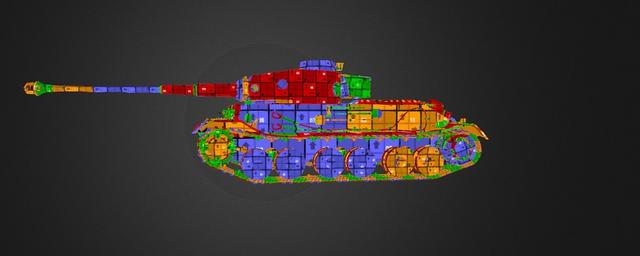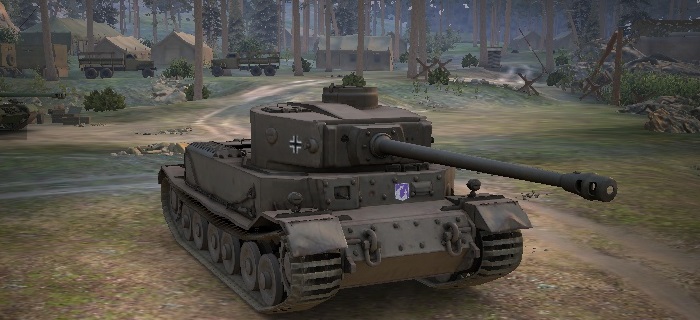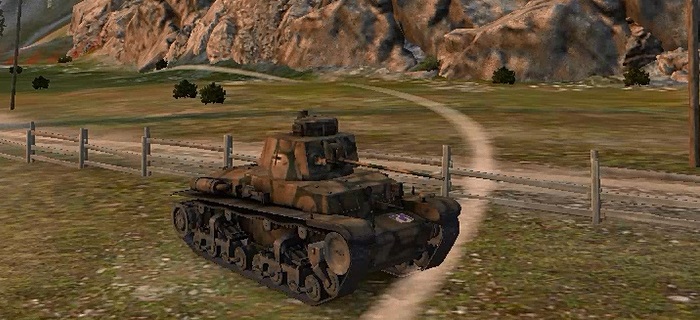On May 26, 1941, Adolf Hitler ordered Dr. Porsche and Henschel to develop prototypes of a new heavy tank, which were demonstrated to the Fuhrer on April 20, 1942. Porsche’s development machine didn’t go into production because of an overly complex drive and control system, as well as the need to use large amounts of copper. Later, the 90 remaining buildings were converted into Ferdinand PT-ACS. Heavy tank from Porsche was designated as VK 4501 (P), and from the company Henschel VK 4501 (H). There were no joke competitions between these firms and Hitler demanded maximum results from them.

The prototype tank was ready in 1942 without preliminary tests and transferred to production with a delivery start date in July 1942. Due to faults in the engine and suspension production was suspended. We managed to collect only 5 tanks. And in October 1942, since Porsche did not cope with the elimination of deficiencies, the Nibelungenwerk plant had to stop the release of this tank altogether.

Characteristics. The chassis of the Tiger (P) Porsche consisted of six double rollers with rear wheel drive, instead of the usual German tank building front placement. The tank was equipped with two air-cooled engines with ten cylinders, which worked for two electric generators that fed two traction electric motors. Which set in motion the drive wheels.
As part of the VK 4501 (P) project, a new type 101 carburetor engine was developed. Two new engines were to be placed in the aft hull. Next to them were two Siemens generators sGV 275/24 with a capacity of 275 kW each. With the help of a set of cables, electric power was supplied to Siemens D1495a electric motors placed in front of the case. Through onboard transmissions, electric motors rotated the front drive wheels.
An interesting feature of the new project was the ergonomics of the crew compartment and an unusual way for the crew to land in their places. For a number of reasons of a technical nature, the tank tower was moved as far as possible. Because of what its frontal part of the body was blocked by a tower and a compartment of management, not allowing to equip it with hatches. As a result, the entire crew of the tank had to get inside the car only through two hatches in the roof of the tower. First, the driver and the radio operator should have entered the tank, then the gunner, the commander and the loader had to climb into it. The landing was proposed to be made in the reverse order.

After assembling the tanks from both firms, VK 4501 (P) and VK 4501 (H) were brought to GHQ. First, the tanks were tested for speed. on the 1000-meter section, the VK 4501 (P) tank developed a speed of 50 kilometers per hour. And his rival VK 4501 (H) at a distance of 850 meters, just 45 kilometers per hour, while his engine was heated so that a fire broke out. When the fire was extinguished, the tank was again ready for action. But in terms of maneuverability and turns in place, the VK 4501 (H) tank Henschel proved to be better than the Porsche VK 4501 (P) tank.

After the demonstration of tanks in May 1942, the tanks were taken to serious tests at the Burke test site. Two tanks VK 4501 (P) and one VK 4501 (P) were brought there. The tank company Porsche VK 4501 (P) revealed a low reliability of electronic transmission. The tank had an unsatisfactory passability and a small power reserve, only 50 kilometers. And at the request of Hitler, this figure should have at least 150 kilometers. Place an additional amount of fuel in the tank was impossible due to lack of space. The unusual transmission required additional retraining of mechanics – drivers and repair service specialists. During the tests, the final decision of the commission was given preference to Henschel and its prototype VK 4501 (H). Subsequently, the Machine acquired the designation Tiger 2. And the Porsche VK 4501 (P) tanks were later used as a base for heavy assault guns armed with an 88-mm anti-tank gun.
Since air-cooled engines were installed in tanks, it was decided that for this reason they were very suitable for operations in semi-desert areas. And in September 1942, it was decided to arm two battalions designed for operations in North Africa. However, due to the problems mentioned earlier and due to the refusal of production, their idea was not implemented. And five “Tigers” were used for training.
In World of Tanks tank VK 4501 (P) or Tiger P is at level 7. For its level tank is strong, which is much stronger than the usual tiger. The stated thickness of armor plates here is only in two planes (straight and inclined sheet of VLD). The rotated body confidently copes with the projectiles of classmates, however tanks of the eighth level and even more so of the ninth, pierce us quite easily. The main problem of the tower is a huge commander’s turret.
The tank is equipped with a very comfortable gun 8.8 cm Kw.K. 43 L / 71, which has excellent penetration, good one-time damage of 240 units and characteristic German accuracy. Basic BB projectiles provide penetration of 203 mm, as already mentioned, an excellent indicator.
According to the dynamics of the tank shows not very good results. With a mass of 62 tons, the 2x Porsche Typ 100/3 engine with a power of 670 hp provides a specific power of 10.8 hp / t and acceleration to 35 km / h ahead.









